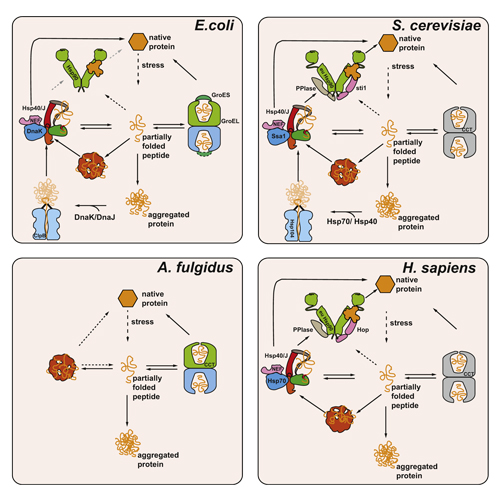The Heat Shock Response: Life on the Verge of Death
22-Oct-2010
Molecular Cell, 2010, doi:10.1016/j.molcel.2010.10.006, Volume 40, Issue 2, 253-266, published on 22.10.2010
Molecular Cell, online article
Molecular Cell, online article
Organisms must survive a variety of stressful conditions, including sudden temperature increases that damage important cellular structures and interfere with essential functions. In response to heat stress, cells activate an ancient signaling pathway leading to the transient expression of heat shock or heat stress proteins (Hsps). Hsps exhibit sophisticated protection mechanisms, and the most conserved Hsps are molecular chaperones that prevent the formation of nonspecific protein aggregates and assist proteins in the acquisition of their native structures. In this Review, we summarize the concepts of the protective Hsp network.











